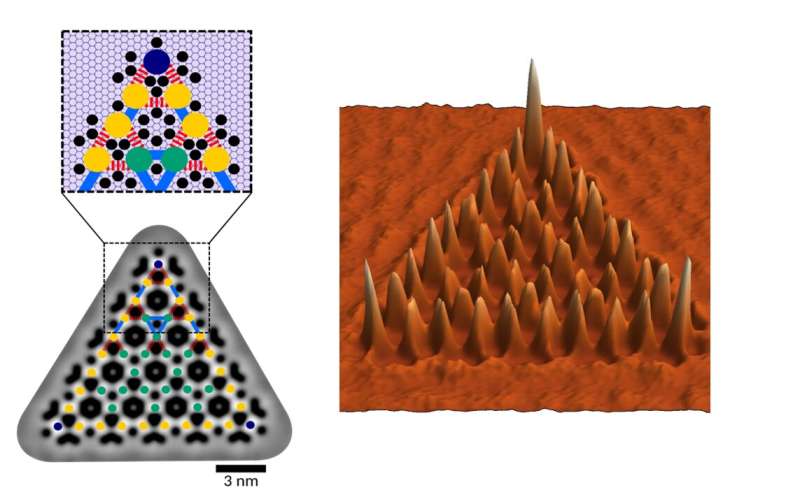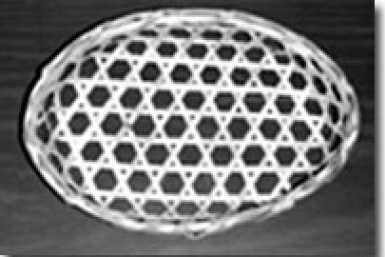Physicists take new step towards realization of qubits for quantum computers

A group of physicists in Utrecht, San Sebastián and Pennsylvania have created a new artificial molecule that is insulating inside but has electronic states localized in its corners. These states have zero energy, and for this reason, are resilient to defects in the molecule and might be used as qubits in quantum computers. The results are published in Nature Materials on 23 September.
Prof. Cristiane Morais Smith from Utrecht University explains: "There are some big challenges in the development of quantum computers. One of the main problems is quantum decoherence: Information is lost into the environment. This makes it more difficult to design electronics on the quantum level than on the classical level. That is why we created electrons that are resilient to quantum decoherence."
Creating artificial molecules
Theoretical physicist Sander Kempkes says, "Normal molecules that can be found in nature often have interesting properties, but it takes a long time to find one that has exactly the properties you would like. That is why we took matter into our own hands." The researchers created artificial molecules from the bottom up using only a scanning tunneling microscope, a copper sample and a bunch of carbon-monoxide molecules, which are placed one nanometer apart from each other.
The researchers were able to create very robust corner modes that are protected by symmetries of the molecule. Just as you cannot get rid of a hole in a donut unless you cut it, these corner modes cannot be altered without doing drastic damage to the system. Due to the extremely precise and controlled way of creating the molecule on the nanometer scale, the researchers were able to verify the resilience to defects of these zero modes localized in the corners of the molecule. Although these modes are not ready to be used as quantum bits yet, it is an important step in the direction of creating them in artificial systems.

Japanese pattern
The researchers were inspired by the so-called kagome pattern, a tiling pattern that originates from Japan and consists of triangles and hexagons. There are some real materials that have this particular shape, but not exactly in the way the researchers sought. This is why the theoretical physicists designed a new kagome molecule on the computer, after which experimental physicists in the lab of Ingmar Swart and Daniel Vanmaekelbergh experimentally realized the molecule. Previously, they used the same techniques to make electronic lattices that relate to supermaterials and quantum fractals.
Muffin tin
Experimental physicist Marlou Slot says, "Manipulating a carbon-monoxide molecule can be thought of as sliding a queen on a chessboard on the nanometer scale, using a needle instead of your finger."
The entire procedure is like creating an inverted muffin tin with the desired geometry for the electrons floating around. The "muffin tin" forces the electrons into a particular shape, although the baking analogy should not be taken too literally, because the experiment takes place at -269 degrees Celsius.
More information: S. N. Kempkes et al. Robust zero-energy modes in an electronic higher-order topological insulator, Nature Materials (2019). DOI: 10.1038/s41563-019-0483-4
Journal information: Nature Materials
Provided by Utrecht University Faculty of Science





















